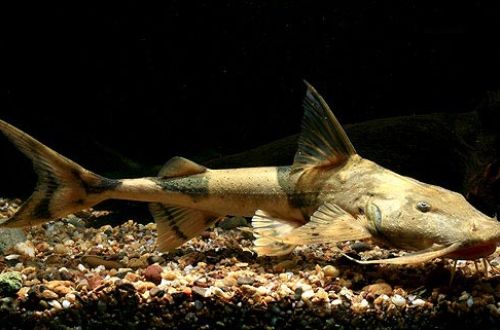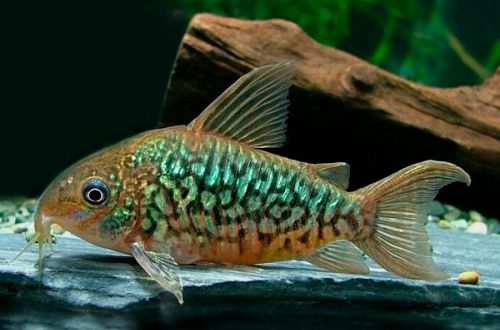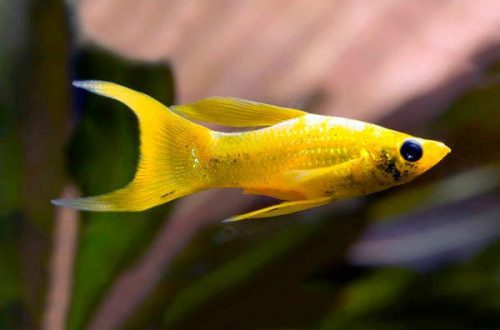
Gunch
Gunch, scientific name Bagarius bagarius, belongs to the family Sisoridae (Bagar or mountain catfishes). It is huge and expensive to maintain, unable to get along with other fish, so it can only be claimed by very wealthy enthusiasts. In habitats, it is often an object of sport fishing, as well as an important food fish for rural populations in poor regions.

Contents
Habitat
It comes from Asia from the Hindustan Peninsula. Inhabits the basins of the Indus, Ganges and Brahmaputra rivers in India, Pakistan, Nepal and Bangladesh. In some sources, the natural habitat extends to Southeast Asia in the basins of the Irrawaddy and Salween rivers in Myanmar, the Mekong in Laos and Cambodia, the Chao Phraya in Thailand and other rivers of the Malay Peninsula. However, for a number of researchers, these unrelated habitats seem doubtful. Probably, in the future, populations from Asia and Southeast Asia will be divided into several species.
In nature, catfish inhabit the main channels of rivers and large tributaries in regions with a fast, sometimes violent current, where they hide among boulders and large stones in anticipation of prey.
Brief information:
- The volume of the aquarium – from 1500 liters.
- Temperature – 16-23°C
- Value pH — 6.0–7.5
- Water hardness – 2–12 dGH
- Substrate type – sandy
- Lighting – subdued
- Brackish water – no
- Water movement – moderate or strong
- Fish size – up to 2 meters
- Nutrition – live, fresh or frozen food
- Temperament – inhospitable
- Content single
Description
There is a significant difference between fish coming from different regions. The maximum size of adults reaches 2 meters. Asian catfish are larger, the body is massive, and the head is similar to dragons with large mustaches from Chinese folklore. Catfish from the Malay Peninsula are similar in appearance, but the body is flatter. Coloration is light with dark pigmentation.
Food
A predator that preys on other fish, amphibians, crustaceans, and other invertebrates. In aquariums accepts similar foods as well as fresh or frozen alternative foods such as whole shrimp, shellless mussels, earthworms, strips of white fish meat.
Maintenance and care, arrangement of the aquarium
Given the maximum size of the Guncha catfish, its maintenance will require a tank of an appropriate volume, starting from 1500 liters for one individual, as well as specialized equipment, primarily a system for cleaning, water treatment and water change. The total weight of the filled aquarium can reach several tons, and the installation of equipment and the laying of appropriate communications are associated with certain construction works. Based on the foregoing, this type of catfish cannot be classified as an amateur aquaristic, since the maintenance is costly in time and money, and also requires a lot of experience if you do all the work yourself.
Behavior and Compatibility
It poses a threat to all fish that can fit in its mouth. Not too friendly towards relatives, with a lack of space, skirmishes for territory are possible. Single content recommended.
Fish diseases
The cause of most diseases is unsuitable conditions of detention. A stable habitat will be the key to successful keeping. In the event of symptoms of the disease, first of all, the quality of the water should be checked and, if deviations are found, measures should be taken to correct the situation. If symptoms persist or even worsen, medical treatment will be required. Read more about symptoms and treatments in the Aquarium Fish Diseases section.





